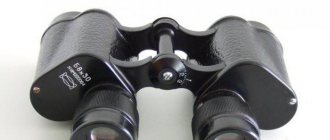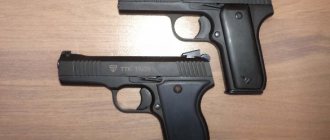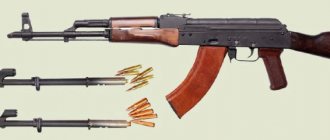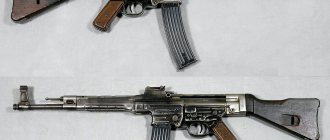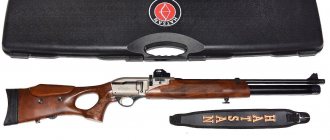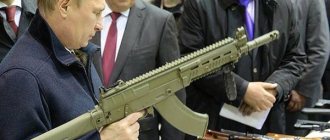A Brief History of the Helicopter
The first experiments in building a working helicopter model occurred at the beginning of the twentieth century, when gasoline engines appeared with power sufficient to provide lifting force to the main rotor. Among the pioneers of helicopter construction were Russian designers: Igor Sikorsky (created two operating models) and Boris Yuryev (invented the rotor skew mechanism). The outbreak of World War II spurred research in the field of helicopter engineering, and in the 40s the first production models of rotorcraft were created. Almost immediately, the military was interested in new aircraft, but only the US war in Vietnam fully revealed the combat potential of helicopters.
The birth of the legendary "eight"
In the Soviet Union, they tried to keep up with the potential enemy in the creation of helicopters, so two design bureaus, Kamova and Mil, were created to develop rotorcraft. Aviation enthusiasts know that these aircraft designers use different designs for their aircraft. If Kamov helicopters have two coaxial rotors rotating in the opposite direction relative to each other, then Mil machines use a tail rotor to turn. According to the technical specifications, the development of the Mi-8 was planned as a modernization of the main helicopter of the Soviet Air Force Mi-4, and began in 1959. But the designer managed, with the support of N.S. Khrushchev, to insist on the creation of an almost new machine. This is how the legendary G8 was born - the most popular and most recognizable Soviet helicopter. Based on it, many modifications were created, some of them, electronic warfare machines, are secret to this day.
Modification for export
Due to the fact that the G8 very quickly became popular not only in the USSR, but also attracted the interest of foreign allies, it was decided to create a special modification of the helicopter for delivery to foreign markets. If we compare the Mi-8 and Mi-17, and this is precisely the index the export machine received, then the main difference between this helicopter immediately catches the eye: the tail rotor on the tail boom is located on the left (for the Mi-8 it is on the right). It was also envisaged to make changes to the design of the seventeenth, according to the requirements of a particular operator. The Mi-17 helicopter is produced in Kazan and Ulan-Ude.
Ukraine will receive five Russian-made Mi-17s
On Friday, January 21, White House press secretary Jen Psaki confirmed the US intention to provide Ukraine with Russian-made Mi-17 helicopters, TASS
. Previously, they were intended to be transferred to the Afghan military - such plans were outlined before the Taliban (an organization banned in Russia) seized power in Kabul.
The White House commented on the information about the voluntary evacuation of diplomats from Kyiv
White House press secretary Jen Psaki commented on information about plans to begin voluntary...
January 21 21:44
“We recently notified Congress of our intention to supply Mi-17 helicopters. So I wouldn’t say that the president is biding his time. Actions in this direction are clearly visible,” said a spokeswoman for the administration of American leader Joe Biden.
According to The Wall Street Journal
, we are talking about five helicopters.
What did Ukraine ask...
The fact that they could be transferred to Kiev became known in early December 2022, when Ukrainian Defense Minister Alexei Reznikov, during a visit to the United States, asked
the American leadership to provide weapons that were intended for Afghanistan before the actual change of power in this republic.
Kiev is counting on the American arsenal intended for Kabul
Kyiv needs weapons systems, including those that Washington has never provided it with before, and...
07 December 11:35
“Reznikov said that assistance is required in the field of air and sea defense, as well as electronic warfare. We are talking about Mi-17 helicopters, which are currently undergoing maintenance in Ukraine,” wrote Foreign Policy
.
...and what will she get?
As the Defense Blog
, as part of military assistance, the Ukrainian Armed Forces should receive five Mi-17V5s and another Mi-8MTV helicopter.
It is expected that the first batch of helicopters will arrive in Ukraine this spring.
“We need to support Ukraine with weapons and intelligence”
A group of US Republican congressmen sent a letter to President Joe Biden asking...
09 November 14:55
The publication writes that in total more than 60 units of military aircraft were taken out of Afghanistan. At the same time, about two dozen Mi-8/17 helicopters of the Afghan Air Force are located outside the country and their fate remains unknown. Experts suggest that these aircraft were used as transport during the flight of the republican government and military.
Helicopter characteristics
The Mi-17 is a family of Soviet-designed Russian military helicopters introduced in 1975. Their production continues at two factories in Kazan and Ulan-Ude. In Russian service it is known as the Mi-8M series.
Maximum speed: 250 km/h Length: 18 m Cruising speed: 240 km/h Weight: 7,489 kg Flight range: 495 km Engine type: gas turbine
Defense Blog: US will transfer Afghan helicopters to Ukraine
The United States plans to transfer to Ukraine at least six helicopters that previously belonged to the Afghan Air Force, writes...
January 22 00:06
On January 20, it became known that the US administration gave permission to NATO member countries - Estonia, Latvia and Lithuania - to supply American-made anti-tank and anti-aircraft systems to Ukraine.
To re-export Javelin anti-tank systems and Stinger air defense systems, these three countries needed the sanction of the United States as a manufacturer and supplier of weapons.
As Biden noted earlier, the military assistance provided by Washington to Kyiv is estimated at $600 million.
Design
Structurally, the Mi-8 and Mi-17 helicopters are actually one model. The main difference is the location of the tail rotor, its direction of rotation and the shortened nacelles of the power units. The main rotor is equipped with a vibration damper; its blades are made of fiberglass. The Mi-17 helicopter is equipped with two gas turbine power plants with a power of 1400 kW. If one unit breaks down, it is possible to continue flying on the remaining engine. A VR-14 gearbox is used as a transmission. The Mi-17 helicopter uses equipment that allows piloting in difficult weather conditions and at night, and on military versions, a device for shooting heat traps and dipole reflectors. The weapons used are the GSh-23 cannon and a heavy machine gun. It is also possible to place a variety of combat installations on an external sling.
Mi-17 from Zvezda in 1/72
Type: Mi-17 Scale: 1/72 Manufacturer: Zvezda, Moscow Catalog number:
The modernization of the Mi-8 helicopter, completed in 1980, led to the creation of an improved version of this machine - the Mi-17. The impetus for this work, undoubtedly, was the intensive combat use of the Mi-8 in the Afghan war. Mil OKB specialists equipped the new modification with a more powerful TVZ-117MT gas turbine engine and moved the tail rotor to the left side, significantly improving the helicopter’s performance characteristics. In 1981 The Mi-17 was demonstrated for the first time at the aerospace exhibition in Paris.
JSC Zvezda, having also slightly modified its Mi-8 model, after a short break produced its own version of the Mi-17, reduced by 72 times. Having opened the colorful box, we find gray sprues in it, among which 5 sprues are helicopter parts, 4 are similar to the Mi-8 kit and one with parts for the Mi-17 engine hood and weapons suspension pylons. The armament itself is represented by six B-8V20 NURS blocks from the Ka-58 set (this is easy to determine by the markings of the sprues). In addition, the set contains a frame with transparent parts, a decal, assembly instructions on 3 A4 sheets, a price list and a catalog of models produced by Zvezda JSC.
The parts are cast cleanly, with almost no flash. Only small sink marks on the main rotor hub part 60S look annoying. The fuselage has shallow, neat internal stitching, mostly correct, and rivet seams are also simulated. The lantern is clean and transparent, but too thick. This can be both an advantage and a disadvantage, but more on that below. Separately molded sliding blisters of the pilot's cabin make it open for inspection; fortunately, sufficient detailing of the cabin interior allows this.
Looking ahead, I will say that this set clearly demonstrated how important such a seemingly insignificant element as a decal is for the future appearance of the model. The manufacturer declared its model as the Mi-17, but if you assemble the model “under the decal”, it is possible to get only the Mi-8MT, board “23 yellow” from the separate 262nd Bagram helicopter squadron. Unfortunately, for the Mi-8 MT the kit lacks many parts that define the appearance of this helicopter. There are no screen-exhaust devices (ESD), an IR jamming station “Linden” installed in the area where the tail boom meets the fuselage, a winch above the cargo compartment door, a bow PKT machine gun, ceiling instrument panels in the cockpit, a central console (autopilot) . The units for shooting decoy thermal targets ASO-2V, installed under the tail boom, will have to be moved to the fairings on the fuselage. But out of 6 NURS blocks, 4 are clearly superfluous. I have never seen more than 2 blocks in photographs of real combat Mi-8MTs. In the mountains, the burden with a bunch of NURS is too much for the Mi-8. In addition, UPK 23-250 cannon containers or FAB-250 bombs were often suspended from the pylons. There is also an extra 1 main rotor blade, but we will still need it. And although the title of the section suggests assembling models from parts present in the box, I confess that it would not have been possible without the use of improvised materials and additional purchased parts.
A comparison of the model with the drawings published in the magazine “Aviation and Time” No. 1(15)/1996 showed that the model basically corresponds to them in size and contours. The main and biggest drawback is the discrepancy between the forward part of the fuselage from the nose section to the partition between the pilot's cabin and the passenger compartment. This error kills the entire appearance of the G8. A couple of extra hatches were found on the starboard side at the bottom-rear of the sliding blister, but there are no ventilation stampings above these “false hatches”. The shape of the armor plates in the forward part of the fuselage is incorrect, the main rotor blades are 4-5 mm shorter, the tail rotor blades are so narrow that it catches the eye. There are practically no lining lines on the fuselage bottom, and those that exist are somewhat incorrect. There is not even a hint of where the landing lights should be installed, not to mention the lights themselves. The attachment points for the main landing gear struts (details 84С, 52С) are not indicated. It is better to assemble the model by units: – fuselage; – engine nacelle (engine hoods); – trusses with suspension pylons; – main rotor; – tail rotor.
These units are assembled together, painted, and at the last stage the landing gear, horizontal tail, and small things (antennas, etc.) are glued to the model.
Let's get down to work. First of all, it is necessary to close the gaping holes inside the fuselage in the area of the fuel tanks. Polystyrene sheets and putty from Tamiya will help here; to seal small holes and scratches, I used Nitro Soft car putty from Body. The fuselage interior began with the floor of Det.3S. It needs to be ground down a little from below, otherwise there will be problems with installing the floor in the fuselage in the assembly with the partition partition. 12C. Parts 23B must be glued lower than suggested, 2 mm, almost to the level of the floor of the cargo compartment. Make the landing seats thinner, change the location of the support posts, move them from the middle of the width closer to the outer edge, replacing the parts. 18V-20V twisted pair copper wire, for example. If you make the hinged doors of the cargo hatch open, it is necessary to seal the space in the ceiling above the doors. In the closed version, you can do without this procedure. Next is the doorway to the children's room. 12С we will make higher, we will increase the door of the child. 14C, by gluing a strip of polystyrene sheet about 5 mm wide to the bottom, we will make the diameter of the door porthole larger by 0.5 mm. The seat backs on the cargo hatch doors (parts 50С/51С) are made of sheet polystyrene and glued to U-shaped wire brackets. The pilots' seats don't look much like themselves, so they had to be modified based on drawings from Zlinek magazine No. 3/1990 and photographs. Seat mounting parts 2B, 8B were not used due to their non-scale thickness; I replaced them with homemade ones made from wire. In the cockpit, an autopilot console was added between the instrument panels, a frame was made to mount the bow machine gun and the machine gun itself, and ceiling instrument panels were added. With children 13C needs to remove the installation pins, gluing it end-to-end to the floor, otherwise it “springs” the partition between the compartments (detail 12C).
Installing the interior into the fuselage and joining the fuselage halves did not cause any problems. After gluing the fuselage, a slight difference in the levels of the left and right halves was discovered in its lower part, which was successfully eliminated using putty. Before installation in standard places, the junction of the cargo hatch flaps (parts 48A, 49A) with the fuselage requires adjustment. And between them there are children. 75 And after assembly, a gap appears, which also needs to be puttied. I had to slightly adjust the joint between the engine nacelle (part 89F+90F+106F+108F) and the fuselage, and then putty the gap in the area of contact with the tail boom. Unfortunately, the portholes from the kit, due to their excessive thickness and poor transparency, will negate all the efforts of the modeller to finalize the interior, so they had to be made anew using the technology suggested by Oleg Shesheney aka Oh. You can read about it in detail in the newspaper “Modelizm” No. 5-6 for 2002 or on the website www.airforce.ru/modelism in an article about the assembly of the Mi-8 by the Czech company KR. The sliding door of the cabin received a new porthole, and I also reduced its thickness. Please note that the diameters of the “door” and “fuselage” windows must be the same. In the front of the fuel tank you need to make a cut into which the door fits in the extreme right position.
So I come to the most interesting part of the story - fixing the lantern. This operation was carried out in a radical way - 3 front frontal sections were cut out. In its “cropped” form, the lamp was installed in its standard place. Then the configuration of the line of junction of the frontal sections of the canopy with the fuselage was corrected, after which newly manufactured “higher” frontal sections were installed in the opening. I had to sand off the entire binding on the lantern. This is where its seemingly excessive thickness came in handy. After final polishing of the canopy, the forward part of the fuselage acquired its natural appearance. During the work on the fuselage, a significant part of the “rivet seams” was lost. Gears from a wristwatch helped me restore them.
After letting the fuselage dry thoroughly, I began to apply the jointing lines shown in the drawings, but not on the model. The cutter mainly touched the bottom of the fuselage. The contour of the hatch around the front porthole on the starboard side is also cut. 3 ventilation slots were stamped immediately behind the right sliding blister. The sliding windows themselves (det. 6D, 7D) were replaced with new ones for the same reason as the portholes.
Parts 96F (nozzles for dust protection devices ROM) were replaced with tubes rolled from aluminum foil. The LTC ASO-2V blocks were transferred from under the tail boom to the fairings on the fuselage, also made independently. I installed ECUs from the Mi-24 model, having previously enlarged the mounting holes for the exhaust pipes. The Lipa station, borrowed from the same model, fell into place after minor adjustments to its joint with the fuselage. I had to change the shape of the armor plates on the fuselage, remove the “bulge” and give them the correct contours, referring to the drawing from the Aviation and Time magazine. There is a hatch cut into the ceiling of the pilot's cabin. A part made of transparent polystyrene sheet is inserted into the resulting opening, in which 2 oval windows are reproduced without any problems. Aluminum foil was perfect for the nose machine gun mask. I made the landing lights myself. The method of their manufacture is described by me on the Internet page https://heliborne.webzone.ru/faq/lights.htm LDPE racks (part 43B) are shortened in accordance with the drawings to a total length of 6 mm. The tail boom support (parts 56С, 57С) is made again from wire. From the “original” part, only a slightly modified “heel” is left. The tension antennas are simulated using the Hobby Plus model thread.
The most noticeable detail of any helicopter model and, moreover, the one closest to the viewer is the main rotor. He deserves a lot of attention. The manufacturers of the model depicted a pattern on the blades, but made it external and non-scale wide. I had to “change” the cut of the blades inward, first lengthening each of them by 4 mm. In doing so, I used pieces of the “spare” part. I recommend gluing the blades to the main rotor hub with cyacrine (Super-Glue), equipping their butt parts with pins made of steel wire (paper clip, pin). This design will be very durable and will prevent the screw from breaking due to careless touching (twisting). I borrowed the tail rotor and the “star” of the main rotor swashplate (part 62C) from the same Mi-24 model. The swashplate rods, as well as the anti-icing system wiring, are made of thin copper wire.
The rear edge of the main landing gear strut fairings (details 84С, 52С) is not to scale, it should be tidied up using a file and sandpaper. I replaced the landing gear wheels from the kit with products. Armament. I removed two oblique jumpers connecting the tubular beams of the pylon holder consoles (details 103F, 104F), since I did not find them in any of the drawings, much less the photo. the NURS B-8V20 blocks are made incorrectly, the number of launch tubes is smaller and they are located incorrectly. Ideally, the standard “pipes” should be cut off from the body (part 40M) and replaced with tubes, for example, made of foil. Due to lack of time, I limited myself to drilling holes in the standard “pipes”.
The model was painted with AKAN (camouflage), Testors, and Humbrol paints (interior and lower surfaces of the fuselage). When applying camouflage spots, a colored insert from the magazine “Aviation and Time” was used with a side projection of this “side”. The paint scheme offered by Zvezda JSC, unfortunately, is not very informative. There is no view from the starboard side. The “lateral” in the mentioned magazine also sins in the same way. The location of the camouflage spots on this side had to be reconstructed from photographs, and I am not completely sure that the spots were applied correctly. I would like to draw your attention to the fact that the fire-bringer dragon was depicted only on the left armored shield of the helicopter with number 23. Therefore, decal element No. 4 (the “right-sided” dragon) is superfluous. Although, taking from other sets of decals the numbers of the tail number and the stars indicating the number of combat sorties, it is possible to make the “31 Yellow” aircraft from the same squadron as the “23 Yellow”. The decals themselves fit perfectly on the surface of the model, there were no silvering or other problems. To be sure, I used Microscale's Decal Set fluid, but I could have easily done without it. The only negative is the thin color layer, which is why the camouflage shows through a little through the yellow numbers.
In conclusion, I will say that despite all the shortcomings, the set of Mi-17 parts allows you to make an excellent model of the famous helicopter. After the Ka-50, Ka-52, Mi-8T, Zvezda OJSC pleased us with another good model of the domestic turntable. It remains to wish the company to continue to move along the chosen path and delight us, modellers, with new developments.
I thank Oleg Sheshenya for his help in creating the model for valuable advice and interesting photographs, Anton Akimov for providing the drawings, Jazz Radio for the wonderful music on the night air.
Used information resources:
1. Ruzhitsky E.I. Helicopters. – M.: Victoria, AST, 1997 2. Magazine “Aviation and Time” No. 1 (15)/1996 3. Magazine Zlinek No. 3/1990 4. Magazine “M-Hobby” No. 5 (39)/2002 5. Newspaper “Modelism” No. 5-6, 2002 6. www.airforce.ru/modelism 7. https://helicopterwalkarounds.czweb.org/
ZvezdaMi-17
Main modifications
Since 1981, when the Mi-17 helicopter received its start in life, a large number of its modifications have been produced, both in civilian and military versions. Let's look at some of them. The Mi-17P is designed to carry passengers; there is a “Salon” version, which is used for VIPs. The Mi-17 rescue helicopter, the photo of which is given in the article, has an M index, is equipped with a boom with a winch and an on-board searchlight for searching for objects at night. Mi-17-1V is a transport vehicle with increased engine power and payload capacity. Among other things, it is also intended for landing troops. In this case, standard weapons are installed on the external sling.
Modern options
At the end of the 80s of the twentieth century, the Mi-17 was modernized, which began to be produced under the symbol Mi-171. On its basis, the Mi-171VA flying hospital, equipped with an operating room, was developed. Intended to provide emergency medical care and evacuate the wounded from hard-to-reach areas. Mi-172 is a helicopter for transporting passengers with increased power from a new power plant. A flying “ecological laboratory” has also been created on the basis of the Mi-17, which is designed to monitor the state of the environment. The helicopter is equipped with equipment for sensing the earth's surface and atmosphere, radiological monitoring, and analysis of the ecological state of the area. The fire option is designed to localize and eliminate fires in hard-to-reach and remote areas and in the forest. Equipped with a drainage device with a total volume of 2 cubic meters. The next modification of the helicopter, the Mi-17PL, is a jammer with phased array antennas. It is designed to suppress aircraft radars and anti-aircraft missile systems, disrupting the operation of enemy air defense systems. The system allows you to select the most effective type of interference for specific radio sources. Mi-17MD is a modernized Mi-17 helicopter (photos of the improved contours of the nose fuselage are presented in the article). For quick loading and unloading of paratroopers, the sliding doors of the cabin on the left side were increased to 1.25 meters. In case of an emergency landing on water, a buoyancy support system is provided, consisting of four balloons, which are filled with gas within half a minute and keep the helicopter afloat for up to thirty seconds. The helicopter can be equipped with additional equipment and tanks.
bEPRNKER lH-17, ЪБКЪЯЭ ТУИРХВЭЯИХ ЛНДХТХХИУЗХЭИ lХ-8, YANUPYUMHK YNDNBNE MUHLEMNBYUMHE murn Hip-H. nM KHLEK OKYUMEP lH-8, YAKHKNBSCH SYARYUMNBYS NR BEPRNKERYU lH-14, OPH SCHRNL UBNYARNBNI BHMR ASHK OEPEMEYEM MU KEBSHY ANPR.yuOOYUPYURSPYU DK ONKERYU DMEL X MNVECH B YAKNFMSHU LERENSYAKNBKHU. MU LH-171 SYARYUMNBKEMSH YAB'GMSHE PYUDKHNYARYUMZHKH "AYUYKYUM-20" X "JDPN-1", PUDHNYNLOYUYASH YUPI-15L X YUPI-SD, DNokePNBYAIKHI KHGLEPKHREKE YAYNPNYARKH X YAMNYU Dhyaya-3 2-90, YUBKHYUTSNPKHGNMRSH yutsy-77 X yutsy-74b, PYUDKHNBSHYANRNLEP t -037, MYUBKHTSYUZHNMMYU YAKHYARELYU-723, LERENPYUDKHNKNYURNP 8yu-813. mu BNEMMSHU BYUPKHYUMRYU lH-17 SYARYUMNBKEMSH SYARPNYARBN BSHAPNYYU krzh DHONKEMSHU NRPYUFYUREKEY yuyan-2 (OND UBNYARNBNI AYUKYNI) X OPEDYURVKHY ONLEU hy YAHYARELYUL.
bePRNKER NYARYUERYAJ B YEPKHIMNL OPNKHGBNDYARBE KH MUUNDHRYA B TsPYuFDUMYAYNI X BNEMMNI SHYAOXYURYUZHHH.
YaONYANAYAM BLEYARKHRE DN 24 OYUYAYUFHPNB HKKH DN 12 MNYAHKNY B YAYUMHRYUPMNL BYUPHUMRE. bePRNKERSH lH-17 SHYYAOXYURKHPSCHRYA ANKEE VEL B 10 YARPIUMYU LHPYU. lNDHTHYUZHHH :
| lH-17 | OEPBUYAEPKHIMYU LNDKHTKHYUZHKH. |
| lH-17PPyu | BYUPHYUMR DK PUDHNSCHKEYRPNMMNI ANPEASH BOEPBSHE ONBKHKYAB B 1990TS. |
| lH-17-1by | BYUPHYUMR KERYUCHYETSN TSNYAOKHRYUK, ONYUGYUMMSHI MU oYUPKHFYAYNL YUBKHYUYUKNME B 1989TS.; NYAMYUYEM ANKEE LNYMSHLH DBKHTSUREKLH rb3-117bl LNYMNYARECH MU BUX 1678 YbR. |
| lH-17 Yulr | BEPRNKER-jRSPLNBKHY BSHOSYAYUELSHI B sKYUM-sDE NYAMYUYEMMSHI YNLOKEYYYULH "bHUPE" X "yuPAUKER". |
| lH-17ld ( lH-8lrb-5 ) | BNEMMN-RPYUMYAONPRMSHI KHTSNRYUBKKHBUERYAJ WITH MUYA MY NUN YUGYUMYAYKHI BEPRNKERMSHI GYUBND. eTsN TNRNTsPYUTKHKHLECHRYA S BYUYA B TNRNYUKEANLE. NЯMNBMNE NRKHVHE NR AYUGNBNI LYUKHMSH - BRNPYU YADBKHFMYU DBEPE ON OPYUBNLS ANPRS, TsPSGNBYU YOOYUPEKE BLEYARN TsPSGNBSHU YARBNPNY X MNNYANBNI NAREYUREKE RHOYU "DEKETHMHI MN I am." |
| lH-17yt | BEPRNKER NYAMYUYEMMSHI YUBKHNMKHYNI THPLSH "uNMHSSCHKK" ON GYUYUGS YUMYUDYAYNI THPLSH "YEKNBMYU TKYUI" (NRYSDYU KH MYUGBYUMKHE). |
| cru: |
| lNDHTHYUZHH | lH-17 |
| dHYULERP TSKYUBMNTSN BKHMRYU, L | 21.29 |
| dHYULERP UBNYARNBNTSN BKHMRYU, L | 3.91 |
| dKHMYu,L | 18.424 |
| bSHYANRYU,L | 4.755 |
| I love it, JC | |
| OSYARNCN | 7100 |
| MNPLYUKEMYU BGKERMYU | 11100 |
| LYUYAHLYUKEMYU BGKERMYU | 13000 |
| bMSRPPEMMHE RNOXBN, JC | 1450 + 1420 |
| RHO DBKHTSUREK | 2 tsrd yKHLNB rb3-117lr |
| lnymnyare, YbR | 2 U 1454 |
| LYUYAKHLYUKEMYU YAYNPNYARE, YL/V | 250 |
| yPEIYEPYAYU YAYNPNYARE, YL/V | 240 |
| oPUYRHVEYAYU DUKEMNYARE, YL | 950 |
| aNEBNI PYUDKHSYA DEIYARBKH, YL | 495 |
| oPUYIRKHVEYAYKHI ONRNNKNY, L | 5000 |
| YaRYURKHVEYAYKHI ONRNNKNY, L | 1760 |
| ShYKHOYUF, VEK | 2-3 |
| ONKEGMYU MYUTSPSGYU: | 32 YANKDURYU XKH 12 MYAHKNYI YANOPNBNFDYUCHYHLH XKH 4000 YTS TsPSGYU B YUAHME XKH 3000 YTS TsPSGYU MY YPCHYE |
| bNNPSPHEMHE: | NDHM 12.7-LL OSKELER yuTYUMYAEEEBY ANEBYU MYUTSPSGYU - 1500 YTS MU 6 SGKYU ONDBEYAYKH: 6 os sb-16-57 16U55-LL HKH sb-32-57 32U57-LL msp, HKH 6U 250-YTs ANLA, KHKH 2 YNMREEMEPU soy-23 -250 I 23-LL OSYNI ts-23k X 4 orsp l-17o YAYNPOKHNM |
| bottom. KhMTNPLYUZHKH: |
| tNRNCPYUTHH: | lH-17 (c) yuKEYAEE lHRJEB |
| lH-17 (c) Pavel Vanka | |
| lH-17 (c) Szabo Gabor | |
| lH-17 (c) Jarek Nakielny | |
| lH-17 (c) Daniel Obers | |
| lH-17 (c) Tamas Terjek | |
| yUAHMYU OKHKNRNB lH-17 (c) Hector Montes de Oca |
bYUPHYUMRSH NYPYYAYH:
| lH-17 bbya xMDXX |
| lH-17 VEYAYNTSN SFOR |
| lH-17 KHRNBYAYNI YNLOYUMXX "AviaBaltika" |
| YaOHYANY HYARNVMKHYNB: |
| bYUDHL lHUEEB. lH-8 - 40 KER B YARPNCH yPSHKE pNDHMSH. bYUDHL lHUEEB. lMNTSNZHEKEBNI BHMRNYPSHK XXI BEYU bYUDHL lHUEEB. lbg HL. l.k.lHKЪ 50 KER e.h.pSFHZHYHI. bEPRNKERSH |
sTSNKNY MEAYU. 2020
Main operators
From the very beginning of their production, Mi-17 helicopters have gained immense popularity in different parts of the globe. And even now, having passed their thirtieth anniversary, these machines conquer the skies of almost a hundred countries and serve in the United Nations. They can be found on all continents: from cold Antarctica to hot Africa. Helicopters deliver a variety of cargo and passengers, put out fires and evacuate the wounded, and fight. The most numerous Mi-17 fleet belongs to Russia and the countries of the post-Soviet space. Among the non-CIS countries that use these machines both in the civilian and military spheres, we can highlight India, Iraq, Afghanistan, Venezuela, Cuba, Nicaragua, Sudan and Turkey. I would especially like to mention the aviation of Iraq and Afghanistan. To replenish it, the Pentagon entered into a contract with Rosoboronexport for the supply of about a hundred Mi-17 helicopters. The United States, which has a very developed aircraft manufacturing industry, recognized that the Russian helicopter is most fully adapted for operation in high mountains and deserts, is reliable and unpretentious in maintenance. Because of these supplies, a conflict even arose between the US Army and American legislators: the Pentagon demanded that the sanctions imposed against Russia not concern the contract for Mi-17 helicopters. It is also of interest that countries such as Romania, Sudan, Turkey and South Korea chose the Mi-17 for use in police units. Based on all of the above, we can conclude: time itself has no power over such successful machines as the Mi-8 - 17, and although more than 50 years have passed since the first helicopters of this model took off, this machine is still is in demand and has a good resource for further modernization.
How can Russians protect themselves from the ban on dollar transactions?
The Russian Foreign Ministry rejected the statement of the Foreign Office about plans allegedly being built in Moscow regarding Ukraine and called on their British colleagues to stop provocative activities and stop spreading disinformation.
“The disinformation spread by the British Foreign Office is further evidence that it is NATO countries led by the Anglo-Saxons who are escalating tensions around Ukraine. We call on the British Foreign Ministry to stop provocative activities, stop spreading nonsense and concentrate on studying the history of the Tatar-Mongol yoke*,” TASS quotes the text of the Russian Foreign Ministry statement.
Earlier, the Foreign Office of the United Kingdom stated that the Russian leadership is considering the option of bringing to power in Ukraine a government loyal to Moscow, which could supposedly be headed by former Verkhovna Rada deputy Yevgeny Muraev.
The Foreign Office also claimed that “Russian intelligence services maintain ties with many former Ukrainian politicians, including Sergei Arbuzov, first deputy prime minister of Ukraine from 2012–2014 and acting prime minister in 2014; Andrey Klyuev, first deputy prime minister of Ukraine from 2010–2012 and chief of staff of former Ukrainian President [Viktor] Yanukovych; Vladimir Sivkovich, former deputy secretary of the National Security and Defense Council of Ukraine; Nikolai Azarov, Prime Minister of Ukraine in 2010–2014.” At the same time, according to London, some of these individuals “are currently in contact with members of the Russian special services, participating in planning an attack on Ukraine.”
In this regard, the head of the Foreign Office, Liz Truss, called on Moscow to ease tensions and negotiate. In her view, “the information released today sheds light on the scope of Russian activities aimed at undermining Ukraine and provides a glimpse into what the Kremlin is thinking.” Truss believes that "Russia must undertake de-escalation efforts, end its campaign of aggression and disinformation, and seek to return to the path of diplomacy." “The UK and its partners have repeatedly stated that any Russian invasion of Ukraine would be a huge strategic mistake with a significant cost,” she said.
The Foreign Office emphasized that “the British position on Ukraine is also clear”: London “unconditionally supports its sovereignty and territorial integrity within the framework of internationally recognized borders, including Crimea.” “Ukraine is an independent and sovereign state,” the Foreign Ministry added.
Earlier, presidential press secretary Dmitry Peskov rejected false accusations against Russia of attacking Ukraine. He explained that Russian troops are on Russian territory near the Ukrainian border in the face of a very tense situation, an unfriendly atmosphere created by various NATO exercises, alliance fighters and spy planes, and the advance of NATO infrastructure to the borders of the Russian Federation.
Russia has repeatedly rejected false US assessments that it is preparing to invade Ukraine. Moscow stated that the United States had developed a special operation plan to worsen the situation around Ukraine and blame Russia for this. The Kremlin explained that information tension around the movements of Russian troops on its territory is being intensified to demonize Russia and position it as an “aggressor.”
Russian President Vladimir Putin noted that they talked about the possible introduction of Russian troops into Ukraine at the beginning of 2021, but this did not happen. In turn, Foreign Minister Sergei Lavrov accused the United States of provoking military hysteria near Russia’s borders.
* Organization(s) have been liquidated or their activities are prohibited in the Russian Federation
Watch even more videos on the VZGLYAD YouTube channel
